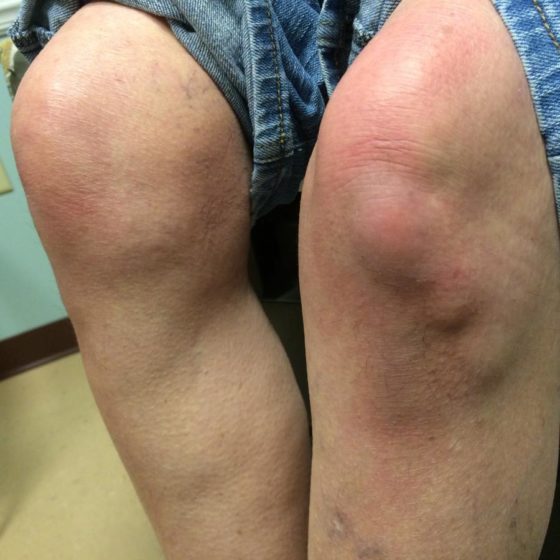Rheumatology – Lesson 7
A 45-year-old man presents with complaints of pain, stiffness, and swelling of his left knee over the last 24 hours. It came on gradually at first but over the last eight hours, it has swollen so much so that he can not bear weight on that knee at all. His other joints are ok. He has no history of similar problems before. There is no history of injury. He has no personal or family history of gout or rheumatoid arthritis.

As you plan to aspirate the left knee you see an area of redness over the left knee. In fact, you have to go thru red area that very much looks like cellulitis in order to aspirate the left knee. At this time the best course of action would be:
- Order X-rays of the left knee and also the right knee for comparison
- Order Serologic testing including ANA, RF, ESR, CRP, Uric Acid, anti-CCP, and Lyme Titers
- Order MRI examination to look for torn meniscus
- Aspirate the left knee and admit patient to the hospital for IV antibiotics
- Aspirate the left knee without admission to the hospital for IV antibiotics
The Correct answer is #4: In this case, it is most important you aspirate the knee. In fact, any swollen joint should be aspirated. Having gone thru the red area that is most likely cellulitis, one should be worried about introducing infection and thus admission for IV antibiotics is needed.
Answers #1, 2, and 3 do not address knee aspiration and thus are the wrong answers.
Answer #5 is incorrect as it ignores risk of septic arthritis.
Knee Aspiration is done whenever there is knee swelling. It can be done via medial or lateral approach. The Fluid can be clear, cloudy, and of different colors such amber, bloody, etc.
